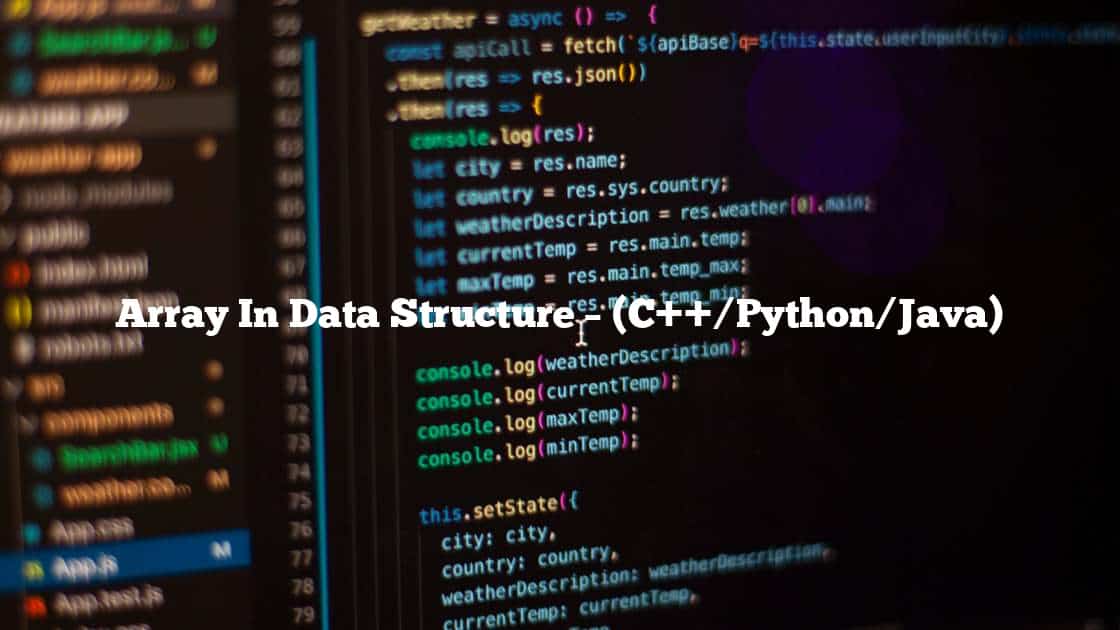Table of Contents
What is an Array?
An array is a data structure that stores a collection of items of the same data type. The items are stored in contiguous memory locations, and each item can be accessed through an index. The index is a numeric value that corresponds to the position of an item in the array.
Types of arrays
There are two main types of arrays:
- One-dimensional array: This is a linear array that consists of a single row or column of items.
- Multidimensional array: This is an array of arrays, where each array can have one or more rows and columns.
Is the array always of a fixed size?
In most programming languages, arrays are of a fixed size, meaning that the number of items in the array cannot be changed once the array is created. However, some programming languages, such as Python, allow for the size of an array to be changed by using dynamic arrays or lists.
Types of indexing in an array:
There are two types of indexing in an array:
- Zero-based indexing: In this type of indexing, the first item in the array is at index 0, the second item is at index 1, and so on.
- One-based indexing: In this type of indexing, the first item in the array is at index 1, the second item is at index 2, and so on.
How an Array is initialized?
There are several ways to initialize an array in different programming languages:
In C++:
int arr[5] = {1, 2, 3, 4, 5}; // initializes an array of 5 integers with values 1, 2, 3, 4, and 5In Python:
arr = [1, 2, 3, 4, 5] # initializes a list with values 1, 2, 3, 4, and 5In Java:
int[] arr = {1, 2, 3, 4, 5}; // initializes an array of integers with values 1, 2, 3, 4, and 5Advantages of using arrays
- Arrays allow for efficient storage and retrieval of data, as all items are stored in contiguous memory locations and can be accessed through their indexes.
- Arrays are easy to implement and use, as they have a simple structure and only require a single loop to access all items.
- Arrays are useful for performing mathematical operations on data, as they allow for easy manipulation of large amounts of data.
Disadvantages of using arrays
- Arrays have a fixed size, meaning that the number of items in the array cannot be changed once the array is created. This can be a limitation if the size of the data is not known in advance or if the data is expected to change frequently.
- Arrays have a fixed data type, meaning that all items in the array must be of the same data type. This can be a limitation if the data consists of items of different data types.
Applications of arrays
Arrays are used in a wide variety of applications, including:
- Storing and manipulating large amounts of data, such as in databases and spreadsheet programs.
- Performing mathematical operations on data, such as in scientific and statistical applications.
- Implementing data structures, such as stacks, queues, and lists.
Examples
Here are some examples of how arrays can be used in different programming languages:
In C++:
#include <iostream>
using namespace std;
int main() {
// Initialize an array with values 1, 2, 3, 4, and 5
int arr[5] = {1, 2, 3, 4, 5};
// Access the second item in the array
cout << arr[1] << endl; // Output: 2
// Modify the value of the fourth item in the array
arr[3] = 10;
// Print the entire array
for (int i = 0; i < 5; i++) {
cout << arr[i] << " ";
}
// Output: 1 2 3 10 5
// Add a new item to the end of the array (not possible in C++ without using a different data structure)
return 0;
}In Python:
# Initialize an array with values 1, 2, 3, 4, and 5
arr = [1, 2, 3, 4, 5]
# Access the first item in the array
print(arr[0]) # Output: 1
# Modify the value of the third item in the array
arr[2] = 10
print(arr) # Output: [1, 2, 10, 4, 5]
# Add a new item to the end of the array
arr.append(6)
print(arr) # Output: [1, 2, 10, 4, 5, 6]
# Remove the last item from the array
arr.pop()
print(arr) # Output: [1, 2, 10, 4, 5]In Java:
// Initialize an array with values 1, 2, 3, 4, and 5
int[] arr = {1, 2, 3, 4, 5};
// Access the second item in the array
System.out.println(arr[1]); // Output: 2
// Modify the value of the fourth item in the array
arr[3] = 10;
// Print the entire array
for (int i = 0; i < arr.length; i++) {
System.out.print(arr[i] + " ");
}
// Output: 1 2 3 10 5
// Add a new item to the end of the array (not possible in Java without using a different data structure)
